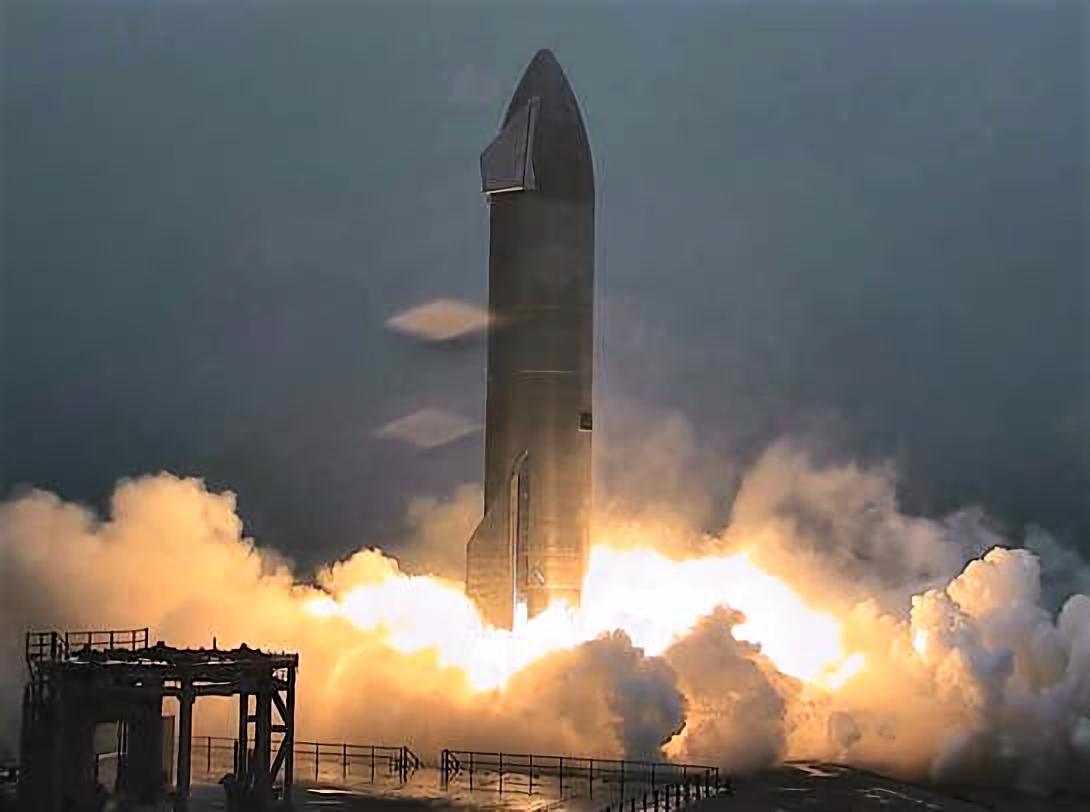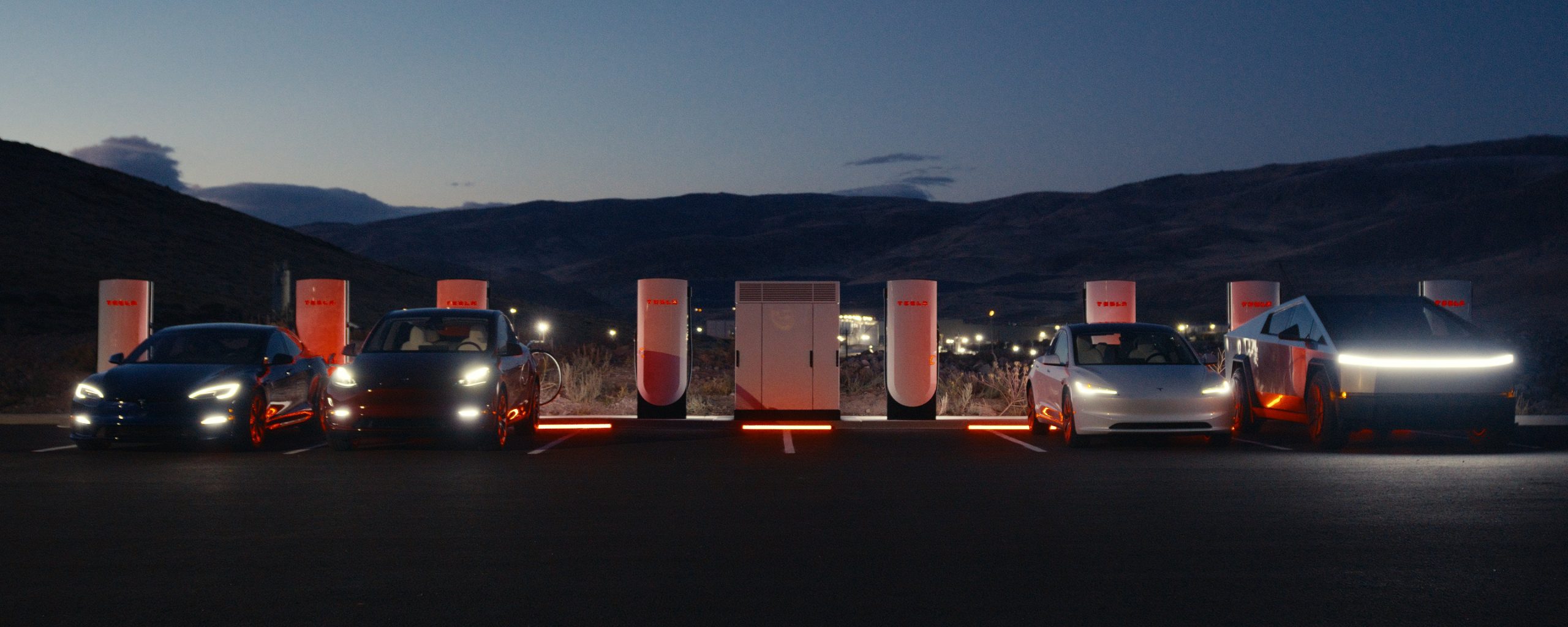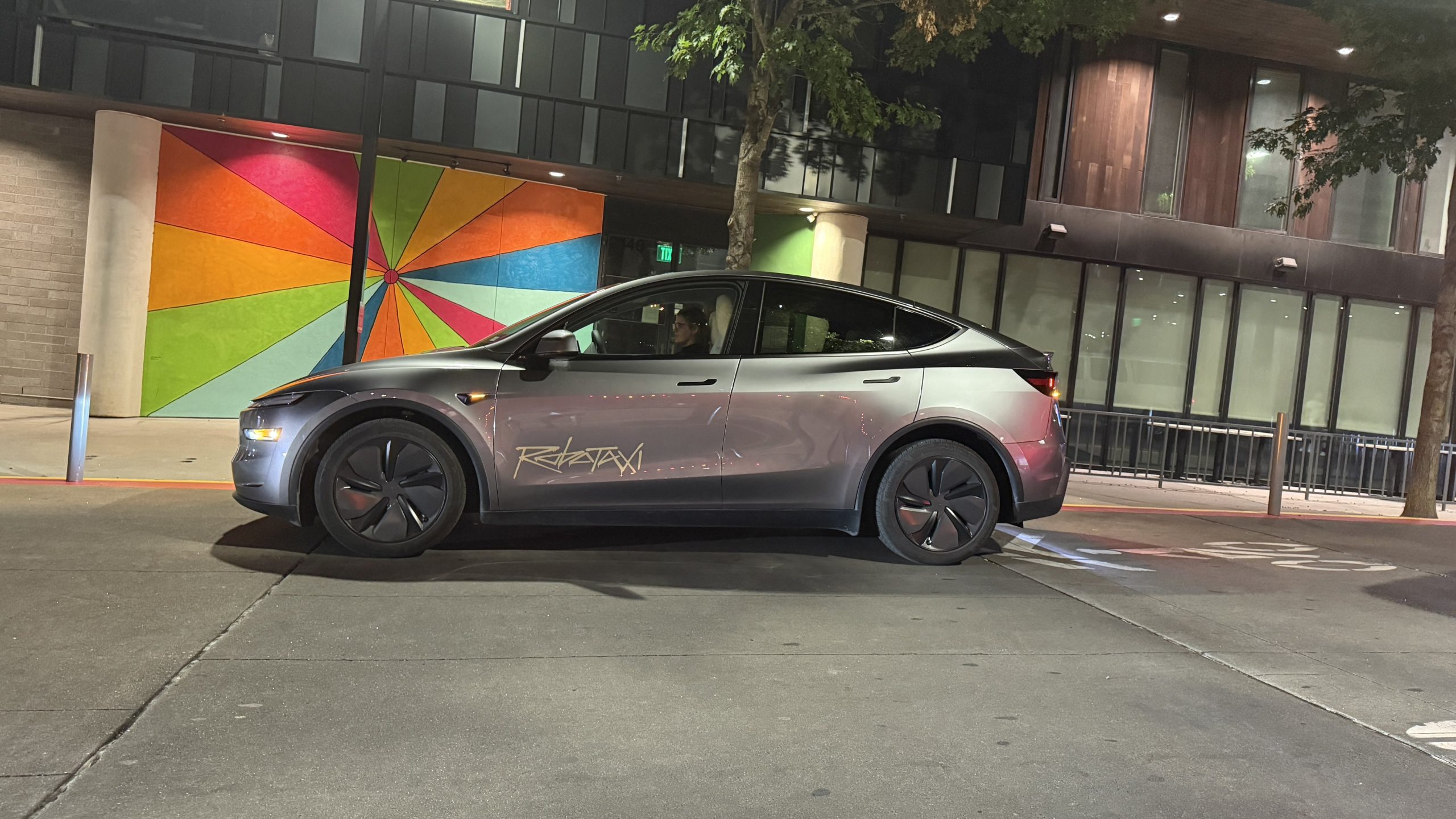

News
High winds scrub SpaceX Starship SN9’s Monday launch attempt
Update (2:30 pm CST): SpaceX appears to have called off Monday’s Starship SN9 launch attempt due (primarily) to high winds along the flight corridor. Additional opportunities are available from 8 am to 6 pm CST (UTC-6) on Tuesday (Jan 26) and Wednesday (Jan 27).
Technically, lacking any official confirmation, there’s still a chance of a launch attempt or additional ground testing happening today but either possibility is extremely unlikely at this point.
Update: SpaceX has completed what is known as a Flight Readiness Review (FRR) and determined that Starship prototype SN9 is ready to attempt its first high-altitude launch as early as today.
All necessary aviation and maritime notices and restrictions are in place and the company has begun the process of closing a public highway and clearing the launch site of employees. Today’s (Jan 25) launch window lasts from noon to 6 pm CST (UTC-6) and Starship SN9 could likely be made ready to launch anytime after 2pm be ready to fly as early as 4 pm CST according to a loudspeaker announcement at the launch pad. Stay tuned for updates and, hopefully, an official SpaceX webcast.
All signs point to SpaceX’s second high-altitude Starship prototype preparing for a 12.5-kilometer (~40,000 ft) as early as Monday, January 25th in a bid to rectify a last-second bug that caused its predecessor to explode last month.
Known as Starship serial number 8 (SN8), the SpaceX-built prototype was the first to have its basic airframe (tank and nose sections) fully integrated, as well as the first Starship to attempt to break the 150m (~500 ft) ceiling set by Starhopper, SN5, and SN6. Break the ceiling SN8 most certainly did, performing a spectacularly successful 12.5 km launch that aced almost every single goal SpaceX had hoped to complete. Keyword almost.
After an impressive 280 seconds of uninterrupted operation of its Raptors, Starship SN8 shut down the last of those three engines, flipped onto its belly, and successful freefell ~12 kilometers back to Earth. The rocket then carried that success even further, reigniting two Raptors, performing a dramatic 120-degree flip, orienting itself vertically, and beginning to slow down for a soft landing.
Only then did Starship SN8’s performance deviate from virtual perfection. At T+6:38, a few seconds after beginning its crucial landing burn, one of Starship’s active Raptors shut down and the other effectively stopped generating thrust. The reason, CEO Elon Musk would later explain, was low head pressure in a smaller tank (‘header tank’) dedicated to supplying fuel during Starship’s wild flip and landing maneuver. It was never confirmed if the Raptor engine shutdown observed milliseconds prior to the other engine losing thrust was intentional.
Cause aside, the end result was unsurprising: without enough thrust to slow down, Starship SN8 accurately impacted the concrete landing zone but did so at high speed – likely around 50-60 m/s (100-150 mph). Given that Starhopper and Starships SN5 and SN6 had already successfully proven Starship’s ability to gently land from 150 meters on a single Raptor engine and that, prior to SN8, Starship’s bizarre belly-flop descent and 90-degree flip had been almost entirely theoretical, SpaceX deemed the launch a spectacular success.
Nothing better exemplifies that than the fact that a little over a month later, SpaceX quite literally began scrapping the most complex, completed section of a future Starship prototype (SN12) before it ever reached the assembly phase. Instead, SpaceX appears to be more focused than ever on a mysterious series of “major” upgrades Musk has said will debut on Starship SN15. Nearly all SN15 subsections have been completed and are simply waiting to be joined together, while parts of SN16 and SN17 are also starting to pile up in staging areas.
Starship SN10 is practically ready to move to the launch pad to prepare for flight as soon as SpaceX chooses to do so and Starship SN11 is likely no more than a week or two of work away from reaching same level of readiness.
Ultimately, despite a long and delay-ridden test campaign, Starship SN9 finally completed what looked like a full-duration static fire of all three of its Raptor engines – the rocket’s sixth static fire overall. On Saturday, January 23rd, SpaceXers installed SN9’s flight termination system (FTS) – a system of explosives designed to destroy Starship if it flies too far off course. For Starship, FTS installation all but guarantees that a launch attempt is a matter of days away. Fresh county roadblocks, Temporary Flight Restrictions (TFRs) granted by the FAA, and Coast Guard a safety notice further imply that SN9 will attempt to launch as early as Monday morning, January 25th, with backup opportunities on Tuesday and Wednesday.
With any luck, like SN8’s high-altitude debut, SpaceX hopefully livestream Starship SN9’s own attempt at the same feat. Stay tuned for more details as they come.
Elon Musk
Tesla investors will be shocked by Jim Cramer’s latest assessment
Jim Cramer is now speaking positively about Tesla, especially in terms of its Robotaxi performance and its perception as a company.

Tesla investors will be shocked by analyst Jim Cramer’s latest assessment of the company.
When it comes to Tesla analysts, many of them are consistent. The bulls usually stay the bulls, and the bears usually stay the bears. The notable analysts on each side are Dan Ives and Adam Jonas for the bulls, and Gordon Johnson for the bears.
Jim Cramer is one analyst who does not necessarily fit this mold. Cramer, who hosts CNBC’s Mad Money, has switched his opinion on Tesla stock (NASDAQ: TSLA) many times.
He has been bullish, like he was when he said the stock was a “sleeping giant” two years ago, and he has been bearish, like he was when he said there was “nothing magnificent” about the company just a few months ago.
Now, he is back to being a bull.
Cramer’s comments were related to two key points: how NVIDIA CEO Jensen Huang describes Tesla after working closely with the Company through their transactions, and how it is not a car company, as well as the recent launch of the Robotaxi fleet.
Jensen Huang’s Tesla Narrative
Cramer says that the narrative on quarterly and annual deliveries is overblown, and those who continue to worry about Tesla’s performance on that metric are misled.
“It’s not a car company,” he said.
He went on to say that people like Huang speak highly of Tesla, and that should be enough to deter any true skepticism:
“I believe what Musk says cause Musk is working with Jensen and Jensen’s telling me what’s happening on the other side is pretty amazing.”
Tesla self-driving development gets huge compliment from NVIDIA CEO
Robotaxi Launch
Many media outlets are being extremely negative regarding the early rollout of Tesla’s Robotaxi platform in Austin, Texas.
There have been a handful of small issues, but nothing significant. Cramer says that humans make mistakes in vehicles too, yet, when Tesla’s test phase of the Robotaxi does it, it’s front page news and needs to be magnified.
He said:
“Look, I mean, drivers make mistakes all the time. Why should we hold Tesla to a standard where there can be no mistakes?”
It’s refreshing to hear Cramer speak logically about the Robotaxi fleet, as Tesla has taken every measure to ensure there are no mishaps. There are safety monitors in the passenger seat, and the area of travel is limited, confined to a small number of people.
Tesla is still improving and hopes to remove teleoperators and safety monitors slowly, as CEO Elon Musk said more freedom could be granted within one or two months.
News
Tesla launches ultra-fast V4 Superchargers in China for the first time
Tesla has V4 Superchargers rolling out in China for the first time.

Tesla already has nearly 12,000 Supercharger piles across mainland China. However, the company just initiated the rollout of the ultra-fast V4 Superchargers in China for the first time, bringing its quick-charging piles to the country for the first time since their launch last year.
The first batch of V4 Superchargers is now officially up and running in China, the company announced in a post on Chinese social media outlet Weibo today.
The company said in the post:
“The first batch of Tesla V4 Superchargers are online. Covering more service areas, high-speed charging is more convenient, and six-layer powerful protection such as rain and waterproof makes charging very safe. Simultaneously open to non-Tesla vehicles, and other brands of vehicles can also be charged. There are more than 70,000 Tesla Superchargers worldwide. The charging network layout covers 100% of the provincial capitals and municipalities in mainland China. More V4 Superchargers will be put into use across the country. Optimize the charging experience and improve energy replenishment efficiency. Tesla will accompany you to the mountains, rivers, lakes, and seas with pure electricity!”
The first V4 Superchargers Tesla installed in China are available in four cities across the country: Shanghai, Zhejiang, Gansu, and Chongqing.

Credit: Tesla China
Tesla has over 70,000 Superchargers worldwide. It is the most expansive and robust EV charging network in the world. It’s the main reason why so many companies have chosen to adopt Tesla’s charging connector in North America and Europe.
In China, some EVs can use Tesla Superchargers as well.
The V4 Supercharger is capable of charging vehicles at speeds of up to 325kW for vehicles in North America. This equates to over 1,000 miles per hour of charging.
Elon Musk
Elon Musk hints at when Tesla could reduce Safety Monitors from Robotaxi
Tesla could be reducing Safety Monitors from Robotaxi within ‘a month or two,’ CEO Elon Musk says.

Elon Musk hinted at when Tesla could begin reducing Safety Monitors from its Robotaxis. Safety Monitors are Tesla employees who sit in the front passenger seat during the driverless rides, and are there to ensure safety for occupants during the earliest rides.
Tesla launched its Robotaxi fleet in Austin last Sunday, and after eight days, videos and reviews from those who have ridden in the driverless vehicles have shown that the suite is safe, accurate, and well coordinated. However, there have been a few hiccups, but nothing that has put anyone’s safety in danger.
A vast majority — close to all of the rides — at least according to those who have ridden in the Robotaxi, have been performed without any real need for human intervention. We reported on what was the first intervention last week, as a Safety Monitor had to step in and stop the vehicle in a strange interaction with a UPS truck.
Watch the first true Tesla Robotaxi intervention by safety monitor
The Tesla and UPS delivery truck were going for the same street parking space, and the Tesla began to turn into it. The UPS driver parallel parked into the spot, which was much smaller than his truck. It seemed to be more of an instance of human error instead of the Robotaxi making the wrong move. This is something that the driverless cars will have to deal with because humans are aggressive and sometimes make moves they should not.
The Safety Monitors have not been too active in the vehicles. After all, we’ve only seen that single instance of an intervention. There was also an issue with the sun, when the Tesla braked abnormally due to the glare, but this was an instance where the car handled the scenario and proceeded normally.
With the Robotaxi fleet operating impressively, some are wondering when Tesla will begin scaling back both the Safety Monitors and Teleoperators that it is using to ensure safety with these early rides.
CEO Elon Musk answered the inquiry by stating, “As soon as we feel it is safe to do so. Probably within a month or two.”
As soon as we feel it is safe to do so.
Probably within a month or two. We continue to improve the Tesla AI with each mile driven.
— Elon Musk (@elonmusk) June 30, 2025
Musk’s response seems to confirm that there will be fewer Teleoperators and Safety Monitors in the coming months, but there will still be some within the fleet to ensure safety. Eventually, that number will get to zero.
Reaching a point where Tesla’s Robotaxi is driverless will be another significant milestone for the company and its path to fully autonomous ride-sharing.
Eventually, Tesla will roll out these capabilities to consumer-owned vehicles, offering them a path to generate revenue as their car operates autonomously and completes rides.
For now, Tesla is focusing on perfecting the area of Austin where it is currently offering driverless rides for just $4.20 to a small group of people.
-

 News5 days ago
News5 days agoTesla Robotaxi’s biggest challenge seems to be this one thing
-

 News2 weeks ago
News2 weeks agoTesla confirms massive hardware change for autonomy improvement
-

 Elon Musk2 weeks ago
Elon Musk2 weeks agoElon Musk slams Bloomberg’s shocking xAI cash burn claims
-

 News2 weeks ago
News2 weeks agoTesla China roars back with highest vehicle registrations this Q2 so far
-

 News2 weeks ago
News2 weeks agoTesla features used to flunk 16-year-old’s driver license test
-

 News2 weeks ago
News2 weeks agoTexas lawmakers urge Tesla to delay Austin robotaxi launch to September
-

 News2 weeks ago
News2 weeks agoTesla dominates Cars.com’s Made in America Index with clean sweep
-

 News2 weeks ago
News2 weeks agoTesla’s Grok integration will be more realistic with this cool feature





















